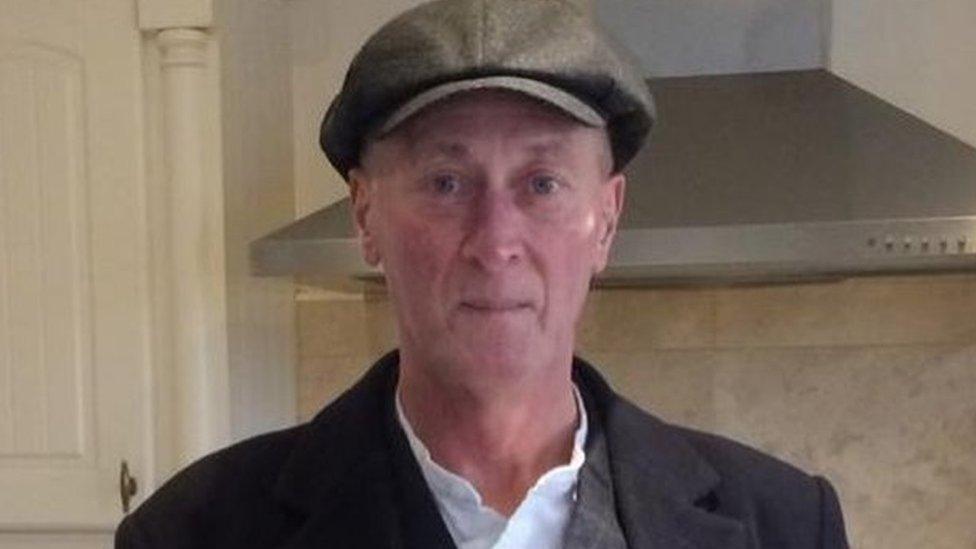Energy bills: Thermal imaging used to help with cost of heat loss
- Published
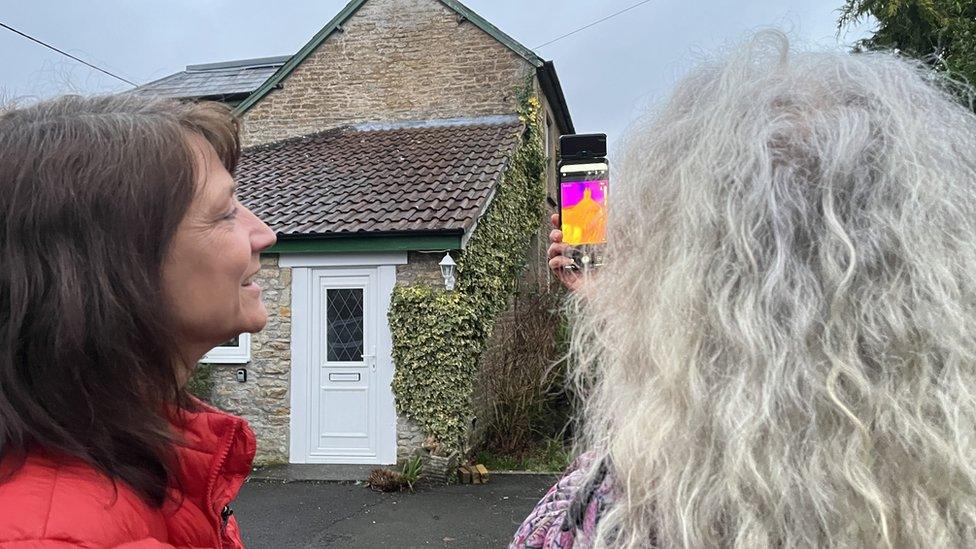
Thermal images show hotter and cooler parts of the home which may need more insulation
People in parts of Somerset have been offered the use of thermal imaging cameras to help them save on their energy bills.
South Somerset District Council bought two infrared cameras and loaned them to parish councils.
They have been used to show people where heat was escaping from their homes.
Meanwhile a separate project helped park home residents in Somerset to improve their energy efficiency.
At dusk in Charlton Musgrove, near Wincanton, Clare Atkinson watched live multicoloured pictures of her house on a mobile phone screen.
The windows glowed white, while there were blues and purples on cooler - better insulated - parts.

Clare Atkinson's house has a poorly insulated 1980s extension
The phone was connected to one of two council-owned thermal imaging cameras, costing around £300 each.
"The main part of the cottage stays warm quite nicely but there's an 1980s extension where we lose a lot of heat," said Clare.
Clare said they fitted curtains over the inside of their doors to try and keep the heat in.
"We're mindful of how much energy is costing, and obviously the environment is something we want to do our bit for, to make sure we aren't wasting energy," she said.
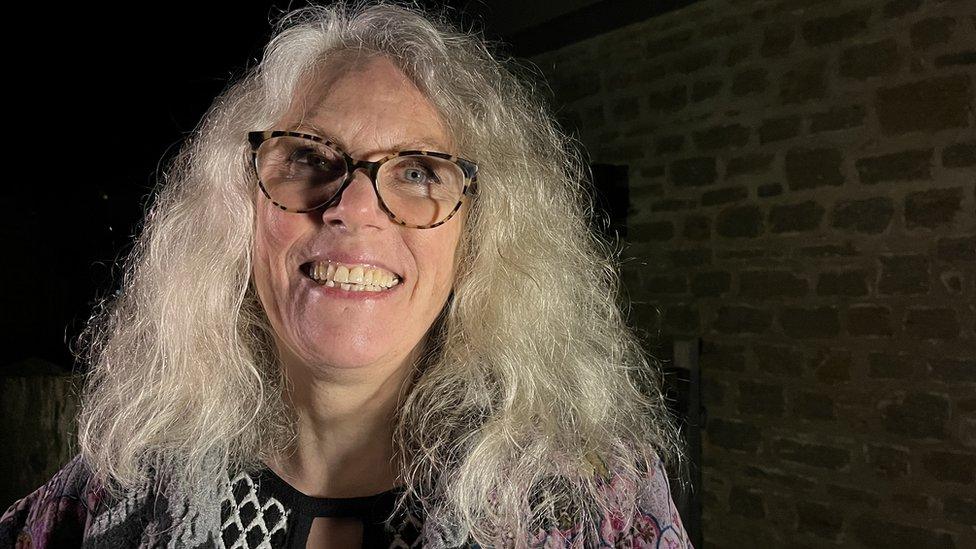
Justine has worked in the retrofit industry for 15 years
Retrofit Bruton and Cary was set up by the local town councils, is funded by the Somerset Climate Emergency Community Fund, and looks after the thermal imaging cameras for the area.
Justine Mallinson from the organisation used the camera on Claire's house.
"It gives people a visual reference because a lot of what's going on in a property you can't see because it's behind plaster or ceilings," she said.
"You'd be surprised at the amount of heat that having your curtains shut at dusk can save. And, if you can, tucking your curtains behind the radiator so the heat all stays in the room rather than going up behind the curtains and out of the windows," Justine said.
'Never been a better time'
Justine has worked in the retrofit industry, in which older homes are adapted with new technology, for 15 years and says there's been a big change in the public's mindset over the past three or four years.
"People are very engaged in doing something to their property, and as our gas and electric bills go up, there's never been a better time to insulate your property than now," said Justine.
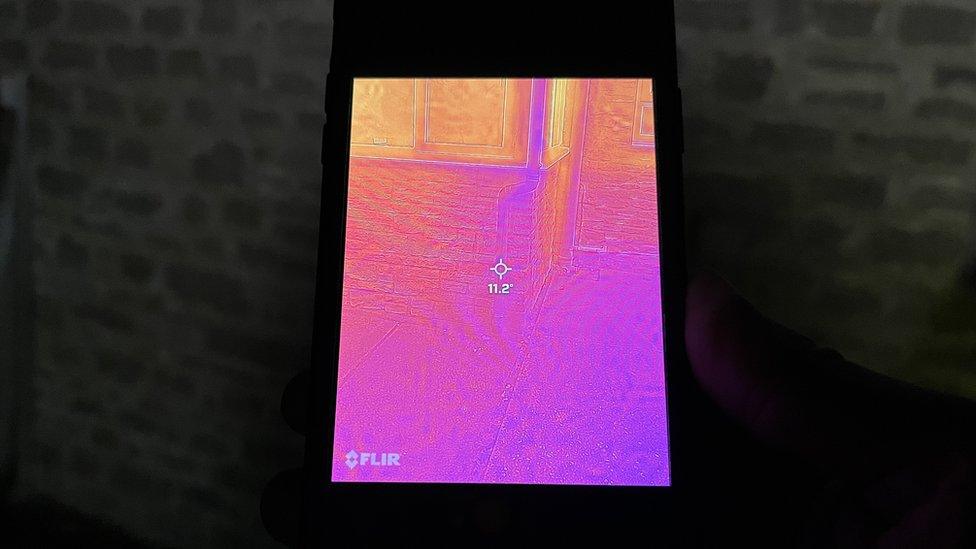
The camera was able to see a damp patch in a wall letting out heat
South Somerset Lib Dem district councillor Henry Hobhouse set up the thermal imaging project.
He drove past 400 homes in Yeovil with a similar camera a few years ago and was amazed at how much heat was being lost out of poorly-insulated front doors.
The cameras are being used on homes around Castle Cary and Bruton where Mr Hobhouse said residents could have problems, despite seeming to be an affluent area.
"There is rural poverty across Somerset. A lot of the people who live in rural areas are having to get support and help, like from foodbanks," he said.
Once people have used the cameras to find any issues, the council says there is advice available, external on grants and funding for energy improvements.
'Most challenging' homes
Meanwhile across Somerset, low-income residents of 28 park homes have had their homes' insulation and ventilation improved and fully paid for under a government scheme.
"Park homes are one of the most challenging types of homes to keep warm and to improve," said councillor Richard Pinnock, from Mendip District Council.
"They are often lived in by older people on limited income, and at risk of fuel poverty."
Park Home owner Marilyn White said her home takes "a fraction of the time" to warm up now.
- Published17 January 2022
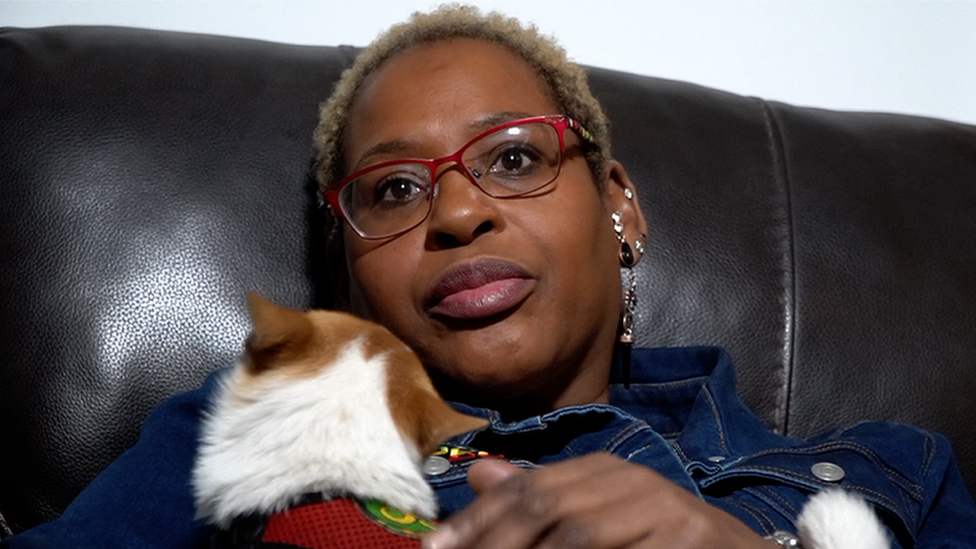
- Published14 January 2022
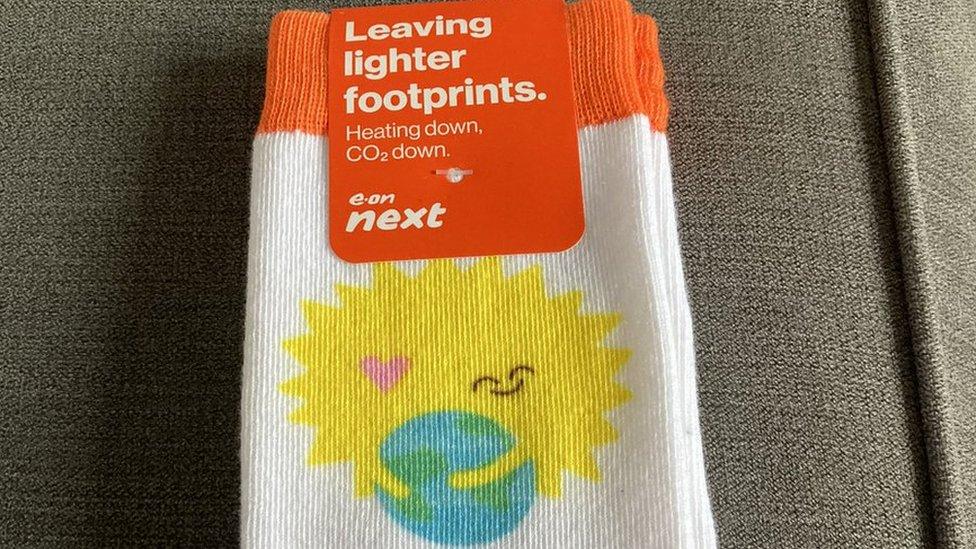
- Published11 January 2022
